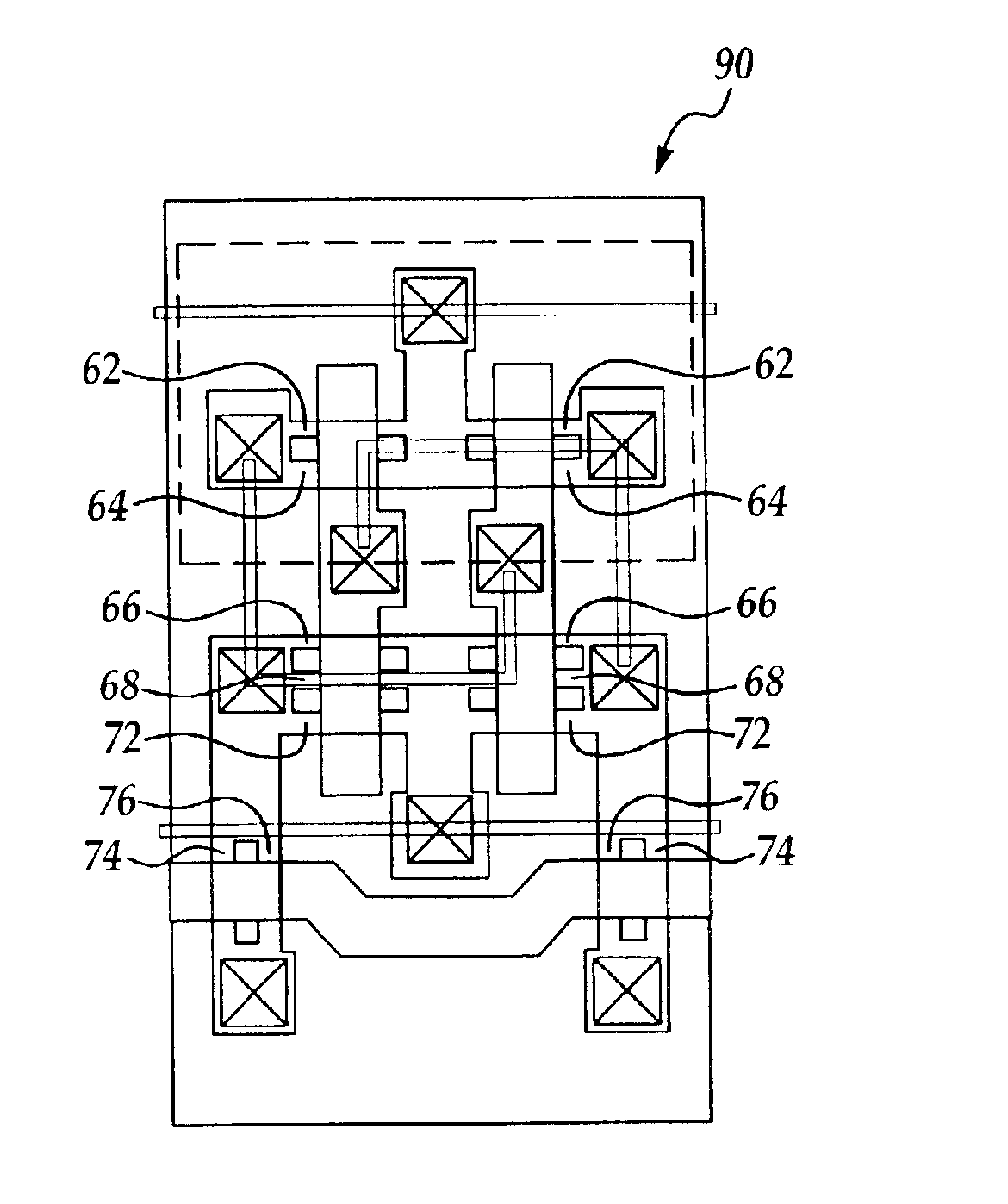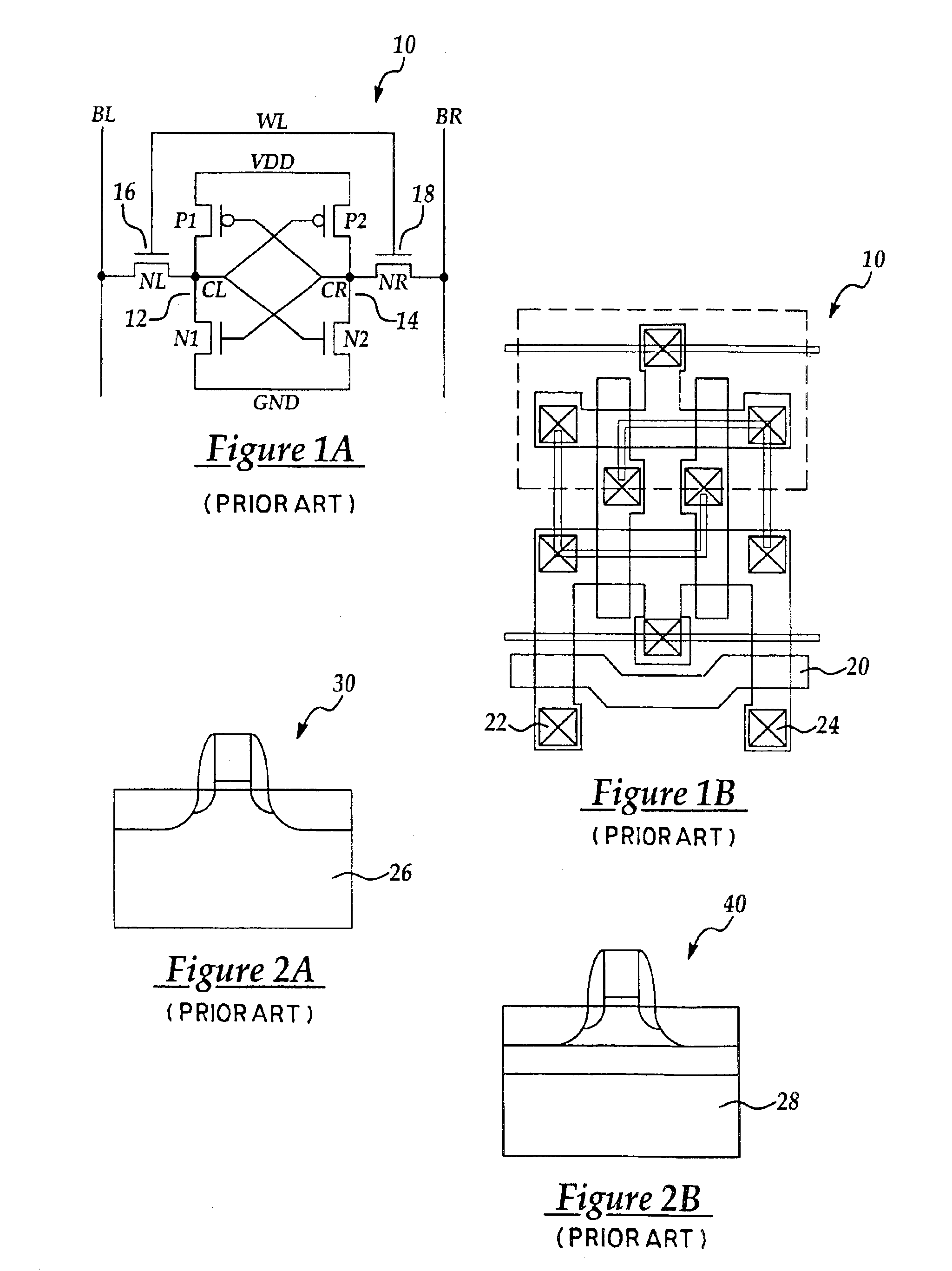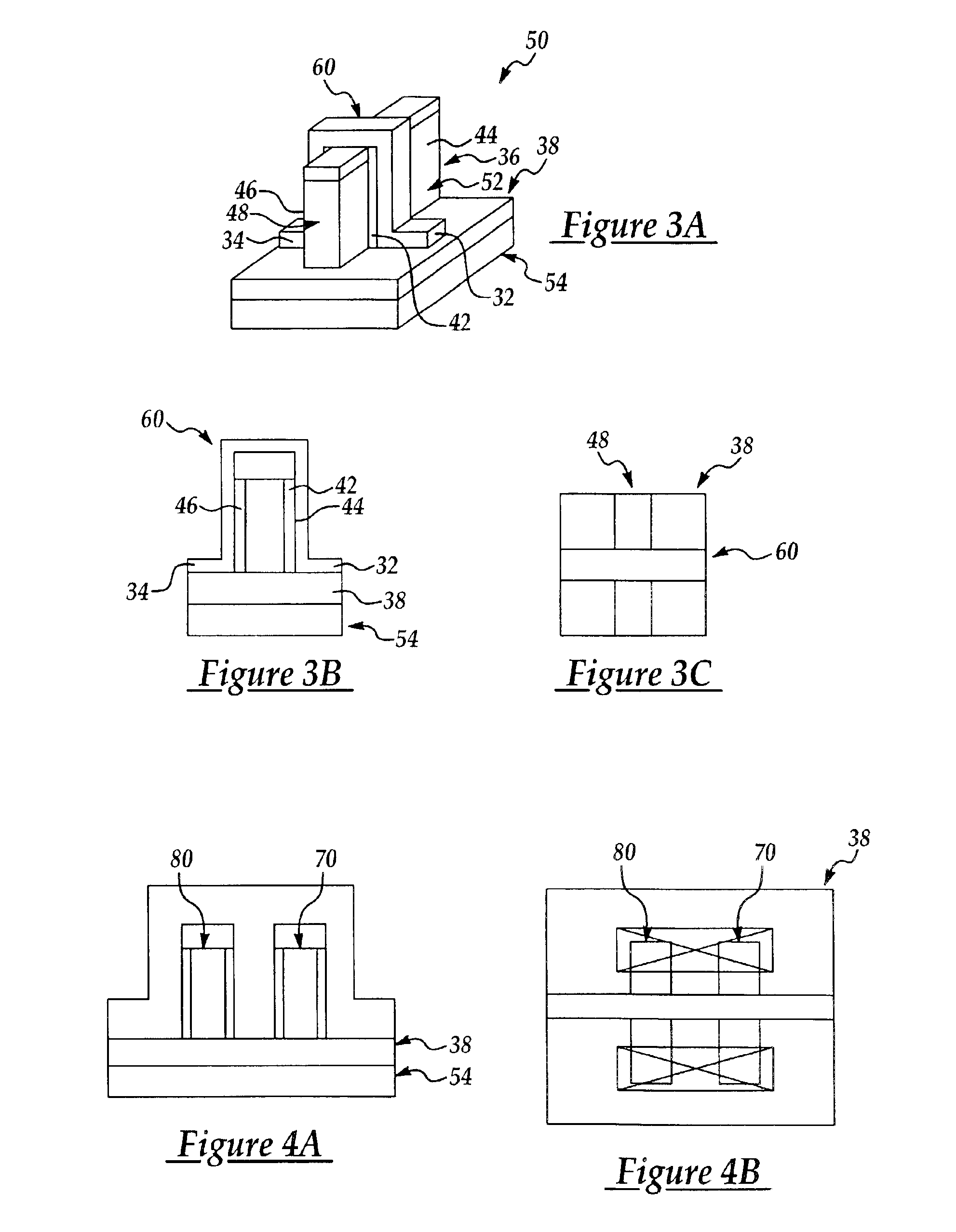CMOS SRAM cell configured using multiple-gate transistors
a technology of multiple gate transistors and sram cells, which is applied in the direction of semiconductor devices, semiconductor/solid-state device details, electrical apparatus, etc., can solve the problems of inability of the gate to substantially control the on and off state of the channel, the size and the desired beta ratio limit the size of the device, and the difficulty of writing the cell into a different state. achieve high permittivity and high permittivity
- Summary
- Abstract
- Description
- Claims
- Application Information
AI Technical Summary
Benefits of technology
Problems solved by technology
Method used
Image
Examples
Embodiment Construction
Conventional SRAM cells, an example of which is depicted in FIGS. 1A and 1B are comprised of conventional transistors formed on bulk silicon substrates or silicon-on-insulator substrates. At present, there is no report on the incorporation of multiple-gate field-effect transistors (MGFETS) in an SRAM cell and the optimization of such an SRAM cell.
One example of the present invention multiple-gate field-effect transistor is a double-gate field-effect transistor (FET) structure 50, shown in FIGS. 3A-3C, where there are two gate electrodes 32,34 positioned on the opposing sides of the channel or silicon body 36. Referring now to FIG. 3A, the double-gate fin FET structure 50 is comprised of a thin semiconductor fin 36 formed on an insulative substrate 38 (e.g., silicon oxide) and defined using an etchant mask. In a preferred embodiment, the semiconductor fin 36 is comprised of silicon. In another embodiment, it may be comprised of an alloy semiconductor such as silicon-germanium (SiGe)....
PUM
 Login to View More
Login to View More Abstract
Description
Claims
Application Information
 Login to View More
Login to View More - R&D
- Intellectual Property
- Life Sciences
- Materials
- Tech Scout
- Unparalleled Data Quality
- Higher Quality Content
- 60% Fewer Hallucinations
Browse by: Latest US Patents, China's latest patents, Technical Efficacy Thesaurus, Application Domain, Technology Topic, Popular Technical Reports.
© 2025 PatSnap. All rights reserved.Legal|Privacy policy|Modern Slavery Act Transparency Statement|Sitemap|About US| Contact US: help@patsnap.com



